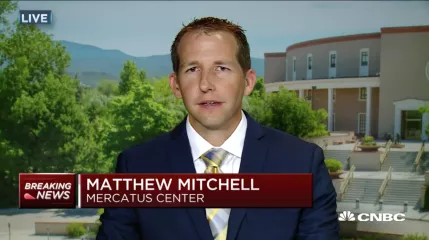Wisconsin is at the frontier of 21st century regulatory policy—at least when it comes to new regulations.
With the stroke of a pen last month, Gov. Scott Walker made Wisconsin the first state to adopt the REINS (or “Regulations from the Executive in Need of Scrutiny”) Act.
It will require that the most expensive state regulations — those expected to cost businesses, local governments, and individuals $10 million or more over any two-year period — are authorized by the Legislature and governor before taking effect.
This sensible approach shifts some authority from unelected state regulators back to elected officials who are more accountable to voters. But what about Wisconsin’s nearly 160,000 restrictions already on the books? Some of these rules are valuable, but some are almost certainly too costly or outdated.
There are two basic kinds of state regulatory reforms. The first are forward-looking, aiming to improve the process for new regulations. Wisconsin’s REINS Act is a notable example. Regulators won’t have the same carte blanche authority to impose unlimited costs on Wisconsinites, at least without first convincing some skeptical policymakers.
However, there is another kind of regulatory reform that is equally — and in some cases more — important than forward-looking reforms. These encourage a look back at existing regulations. Combing through the piles and piles of rules already in place will likely be Wisconsin’s next frontier.
A new report published by the Mercatus Center at George Mason University shows that the Wisconsin Administrative Code contains a total of 159,253 regulatory restrictions. These are instances of the words “shall,” “must,” “may not,” “prohibited,” and “required” — giving a glimpse of how many legal directives and prohibitions Wisconsin businesses and individuals must follow.
This report is part of a broader effort to measure regulation across the 50 states using sophisticated software technology. Computer programs are needed because most state codes are simply too long and complicated for a normal person to read from start to finish.
Wisconsin’s code, for example, contains 12 million words. It would take an ordinary person working 40 hours per week almost 17 weeks to read it.
All this regulation matters for economic growth and prosperity. For example, a 2006 study from researchers at the World Bank found that countries with the most business-friendly regulatory environments grow 2.3 percentage points faster annually than countries with the least business-friendly rules.
Wisconsin’s neighbor to the south, Illinois, has more than 259,000 restrictions in its regulatory code — 100,000 more than Wisconsin. This could be a reason why large employers like Foxconn are choosing Wisconsin over Illinois. Yet, some might be surprised to learn that the code of another neighbor, Minnesota, contains less than half the number of words in the Wisconsin code and 60,000 fewer restrictions.
One way for Wisconsin to sensibly manage its burdens is to place a hard cap on the number of requirements that regulators can impose at any given time. Under such a system, when a new burden is added, an old one must be taken away to ensure the code doesn’t continually grow without limit.
This is the approach that another nearby neighbor, Canada, has been following in recent years. The Canadians learned from the successful experience of British Columbia, which began cutting red tape in the early 2000s. The province’s economy has jumped from one of the worst to one of the best performing in Canada, while still protecting health and the environment.
Wisconsin is at the frontier of 21st century regulatory policy — at least when it comes to new regulations. The next step will be to apply the same high standards to the regulations already affecting its people.
